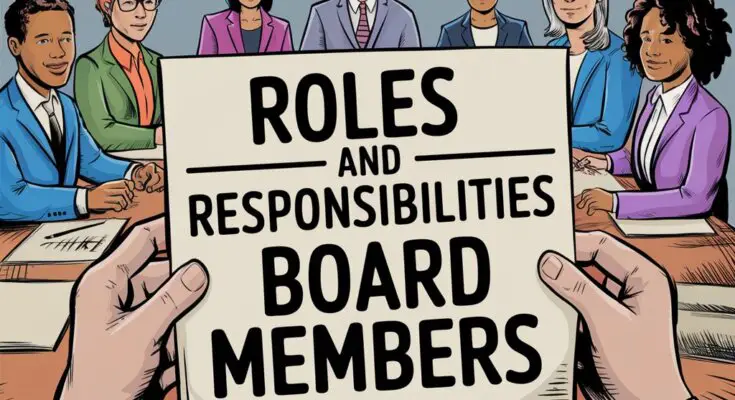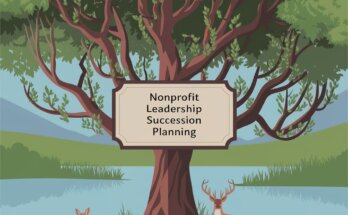When it comes to running a nonprofit organization, one of the most crucial components is the board of directors. These individuals are not just figureheads; they play vital roles and hold significant responsibilities that can make or break an organization. Understanding the roles and responsibilities of nonprofit board members is essential for ensuring the success and sustainability of your organization.
In this post, we will explore these roles in detail, provide practical examples, and share stories that illustrate their importance.
By the end, you’ll have a clear understanding of how to effectively engage board members and empower them to lead your nonprofit to new heights.
What’s Nonprofit Board Structure?
Before we get into the specific roles and responsibilities, it’s important to understand the basic structure of a nonprofit board.
Typically, a board is composed of a group of individuals who are committed to the mission of the organization and are willing to contribute their time and expertise.
These individuals may include community leaders, professionals, and volunteers with diverse backgrounds and skills.
1. Governance and Oversight
One of the primary responsibilities of nonprofit board members is governance and oversight. This means that board members must ensure that the organization is operating in accordance with its mission and the laws governing nonprofits. They are responsible for:
- Setting Policies: Board members help establish policies that guide the organization’s operations. For example, they might create a conflict-of-interest policy to ensure that all decisions are made in the best interest of the nonprofit.
- Monitoring Compliance: Board members must ensure that the organization complies with all local, state, and federal regulations. This could involve reviewing financial statements to ensure that funds are being used appropriately.
- Evaluating Performance: Regular assessments of the organization’s performance are essential. Board members should ask questions like, “Are we meeting our goals?” and “How can we improve our impact?”
Example: At a local arts nonprofit, the board decided to implement quarterly reviews of their community outreach program. By doing this, they were able to identify which programs were most effective and allocate resources accordingly, ultimately increasing community engagement.
2. Financial Oversight
Financial responsibility is a significant part of a board member’s role. Nonprofit board members need to have a solid understanding of the organization’s finances to ensure that funds are being used effectively. Their responsibilities include:
- Budget Approval: Board members should review and approve the annual budget. This requires them to understand the financial needs of various programs and initiatives.
- Financial Reporting: Regular financial reports should be reviewed by the board to ensure transparency and accountability. This may include reviewing income statements, balance sheets, and cash flow statements.
- Fundraising Oversight: Board members often play a role in fundraising efforts, either by directly participating or by ensuring that the organization has a solid fundraising strategy.
Example: Consider a nonprofit focused on environmental conservation. The board realized that their fundraising efforts were falling short. They decided to form a fundraising committee to brainstorm new ideas and strategies. As a result, they launched a successful crowdfunding campaign that exceeded their goal and significantly boosted their budget for the coming year.
3. Strategic Planning
Strategic planning is another key responsibility for nonprofit board members. They need to help set the long-term vision for the organization and guide its growth. This involves:
- Creating a Strategic Plan: The board should work with the executive director and staff to develop a comprehensive strategic plan. This plan should outline the organization’s goals, strategies, and measurable objectives.
- Monitoring Progress: Board members should regularly review the progress of the strategic plan and make necessary adjustments. They need to be proactive in addressing any challenges that arise.
- Engaging Stakeholders: Engaging stakeholders, including staff, volunteers, and community members, is essential for effective strategic planning. Board members should ensure that diverse perspectives are considered.
Example: A nonprofit dedicated to education reform conducted a strategic planning retreat with board members and staff. By involving a diverse group of stakeholders, they identified key areas for growth, such as enhancing their online learning platform and expanding their outreach efforts to underserved communities.
4. Advocacy and Public Relations
Board members serve as ambassadors for the organization, advocating for its mission and promoting its work. Their roles in advocacy and public relations include:
- Building Relationships: Board members should cultivate relationships with community leaders, potential donors, and other stakeholders. These connections can help raise the profile of the organization.
- Representing the Organization: Board members may be called upon to speak at events, participate in media interviews, or attend community meetings. They need to effectively communicate the organization’s mission and impact.
- Rallying Support: Board members can mobilize support for the organization’s initiatives, whether it’s through volunteering their time, making financial contributions, or encouraging others to get involved.
Example: A nonprofit focused on mental health awareness had board members actively participate in local community events. One board member shared their personal story about the importance of mental health support, which resonated with attendees and inspired several individuals to get involved with the organization.
5. Hiring and Evaluating the Executive Director
The board is responsible for hiring, evaluating, and, if necessary, terminating the executive director. This is a crucial aspect of their role as it directly impacts the organization’s effectiveness. Responsibilities in this area include:
- Conducting Searches: When hiring a new executive director, the board should conduct a thorough search, including creating a job description, reviewing applications, and conducting interviews.
- Setting Performance Goals: The board should set clear performance expectations for the executive director and establish a process for regular evaluations.
- Providing Support: It’s important for board members to support the executive director in their role by providing mentorship and guidance.
Example: After a rigorous search process, a nonprofit board hired a new executive director with a strong background in community engagement. To ensure success, the board set specific performance goals for the first year, including expanding partnerships with local businesses. They held quarterly check-ins to provide support and adjust goals as needed.
6. Fundraising and Resource Development
Nonprofit board members have a crucial role in fundraising and resource development. Their responsibilities include:
- Participating in Fundraising Activities: Board members should actively participate in fundraising events and initiatives. This could mean soliciting donations, attending fundraising galas, or hosting events.
- Identifying Funding Opportunities: Board members should leverage their networks to identify potential funding sources, including grants, sponsorships, and individual donations.
- Making Personal Contributions: It is essential for board members to lead by example. By making personal contributions, they can demonstrate their commitment to the organization and inspire others to give.
Example: A community health nonprofit noticed a decline in donations during the pandemic. The board rallied together to host a virtual fundraising event, reaching out to their networks to secure donations. The event not only raised significant funds but also strengthened community engagement.
7. Building a Diverse and Effective Board
Diversity is key to an effective board. Nonprofit organizations should aim to create boards that reflect the communities they serve. Board members can contribute to this goal by:
- Recruiting Diverse Members: Actively seeking out individuals from various backgrounds, experiences, and perspectives will enhance the board’s effectiveness.
- Fostering Inclusion: Creating an inclusive environment where all voices are heard and valued is essential for effective decision-making.
- Providing Training: Offering training and development opportunities for board members can help enhance their skills and understanding of their roles.
Example: A youth development nonprofit recognized the need for a more diverse board. They formed a nominating committee that specifically focused on recruiting individuals from underrepresented communities. This led to richer discussions and more innovative ideas.
A Board Member’s Journey
Let me share a story about Sarah, a board member at a local animal rescue organization. When Sarah first joined the board, she was unsure about her role and how she could make a difference. She attended her first meeting, where the executive director presented a compelling case for increasing community outreach. Inspired by the presentation, Sarah decided to take action.
She proposed a new initiative: a community pet adoption fair. Initially, some board members were skeptical about the idea, worried about costs and logistics. However, Sarah’s enthusiasm was contagious. She took the lead, organizing a committee to plan the event and reaching out to local businesses for sponsorships.
On the day of the event, the fair was a resounding success! Hundreds of community members attended, and the organization adopted out several animals. More importantly, the event raised awareness about the nonprofit’s mission and attracted new volunteers. Sarah’s experience illustrates how board members can use their skills and passion to create a tangible impact, ultimately leading to the organization’s success.
Conclusion
Now that you have a clear understanding of what makes an effective board, it’s time to take action!
If you’re interested in more expert tips and resources to help your nonprofit thrive, be sure to subscribe to the Nonprofit Navigators Newsletter.
Join a community of like-minded individuals committed to making a difference and receive valuable insights straight to your inbox.
Additionally, don’t miss out on the Top 10 Donor Stewardship Strategies for Nonprofits + Free Donor Engagement Checklist.
This resource will provide you with actionable strategies to enhance your donor relationships and ensure sustainable support for your mission.
Together, let’s build stronger nonprofits that create lasting impact in our communities!
Additional Resources:
- Digital Marketing for Nonprofits: A Comprehensive Guide to Boosting Your Impact Online
- Mastering Online Fundraising: A Nonprofit’s Guide to Digital Success
>>>>>>>>>>>>>>>>>>>>>>>>>>>>>>>>>>>>>>>>>>>>>>>>>>>>>>>>>>>>>>>
Hi, I’m Queen Israel Nweke! I help nonprofits thrive by mastering grant writing, strategic funding, and effective nonprofit management, enabling them to secure resources and make a lasting impact in their communities.
Interested in any of these services? Contact me at [email protected].




